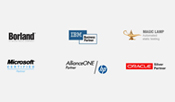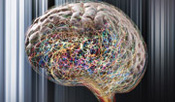Ideas taking flight

Adding value to your business with technology...
Our Partners

Collaboration for excellence
JMobility

Enterprise Everywhere...
JEmSys

Intelligence Embedded...
JenEXAR

Testing Simplified...
JenWeb

Webbing solutions...
Magic Lamp

Static testing automated...
COTS Products

Fuelled to fly...
Unique in "i"

Beyond RPG and COBOL...
Sign up for newsletter
© Jenesys Technologies
Jenesys Products

Specialized solutions for specific needs
We are experienced in developing proprietary software products for our clients and such services are offered by our product engineering division. Also, we act as a single point of contact to work with for picking and choosing the right product solutions from our partners. We provide services around all of them.
Product Engineering
Jenesys follows a PMI recommended process from initiation to control and up to the closing phase of the project to ensure quality and efficiency. At Jenesys we have developed a proprietary process for conceptualizing, planning, and executing solutions for complex business problems. We draw on skills in business strategy, technology, creativity and marketing using user-centred design. Our process includes four phases, and ensures success through client involvement in all stages.We believe every business is a puzzle with complex business processes. We have derived our inspiration from magical cube for solving such complex business processes for a business is like a cube with multiple faces and unless each face is understood well and turned and tweaked in the right direction, a reliable and an efficient scalable solution cannot be achieved.
The process includes four phases: define, design, develop and deploy. Through all the phases the client is informed of what progress has been made.
Jenesys's Productization Strategy & Architecture service enables our clients to design a technology foundation that can quickly respond to business changes. The service is built around Productization, Jenesys's unique methodology to create and consolidate software assets into client-specific platforms that are leveraged across an organization.
At the inception phase of the engagement, Jenesys conducts an in-depth requirement analysis through facilitated workshops with all the stakeholders to understand our client's business objectives such as growth, re-alignment, process improvement and more. Our experienced architects, technology experts, and business domain specialists collaborate with clients to identify change drivers and expose hidden factors that may impact the architecture in the long run.
During the elaboration phase, the joint teams compile an inventory of all IT assets and processes to identify redundancies and recurrences that can be consolidated to achieve simplicity and future reuse. The aspects of configurability, customizability, and flexibility are examined very carefully so that they can be built into the design and the solution architecture. The final deliverable is an implementation plan that empowers our clients with a clear roadmap to create platforms, products, and solutions.
The Productization Strategy & Architecture service delivers measurable business benefits such as the following:
- Improved agility through change-ready architectures
- Significant reduction in development, deployment, integration, and maintenance costs due to a better architecture that is built to last
- Improved strategic visibility through a clear strategy and long-term roadmap
- Increased predictability through streamlined and tailored process
When we deliver a product to the client, these are the factors we focus on:
- Progress
- Quality
- Backward compatibility
- Future changes in client needs from the product
- Extensions
ERPconstruct - A web-based ERP for the structural design industry
Jenesys has developed an ERP application for the construction industry, focusing specifically on companies with multiple construction sites. This application helps such companies in the following areas:
- Materials management
- Labour management
- Vehicle management
- Asset management
- Account management
- Reports
- Supports multiple sites at various locations
- Supports multiple users
- Integrated or Plug & Play modules
- Easy integration with other ERPs
- Separate module-based reports and general reports
FINdeal - Portfolio Management System
Every stock deal has minute and complex details, and each transaction influences the trend of performance of the portfolio as a whole. The FINdeal Information Management System provides your share brokers with up-to-date information - nationally, regionally, by client, and by industry - to help them close the deal. They can view at one place all the deals they have made with a client, trend these transactions to the larger picture of portfolio performance as a whole, evaluate exposure risk in their deals, and clearly see profit potential. With such quality information readily available, dealmakers can communicate a high level of knowledge and expertise that will make their suggestions and proposals valuable to any prospect and any company.The FINdeal Information Management System has been developed to work on a thin client architecture using HTML, DHTML, JavaScript, and ASP, with MS-SQL Server as backend, MTS as Middle Tier business server and Seagate Crystal Reports 8.0 as web report server for generating reports. It provides immediate access to accurate and up-to-date information from anywhere in the world at any time through your web browser.
EnergIT - Energy Management
The CRC Energy Efficiency Scheme (formerly known as the Carbon Reduction Commitment) is a mandatory carbon emissions reporting and pricing scheme to cover all organizations using more than 6,000MWh per year of electricity.EnergIT, a Jenesys product, provides an integrated solution which analyses different sources of greenhouse gas (GHG) emissions in an organization and collates data on a regular basis to provide multi-granular reporting and forecasting towards helping reduce these carbon emissions and thereby meeting CRC targets.
The reports created by this tool detail the procedures utilized within a system to develop carbon emission calculations and future energy and carbon forecasts. The Carbon Accounting Tool analyses the Carbon emission data and identifies key areas to reduce energy emission and thus reduce carbon footprint of an organization.
The Carbon Accounting Tool integrates the following elements:
- Energy usage: This provides the necessary data to determine core GHG emission calculation
- Organizational structure: This determines the individuals responsible for each facility and the operational divisions within an organization corresponding to facility usage.
- Facility function: It determines the activities that are responsible for the greatest levels of emission by an organization, thereby pointing out the greatest opportunity for GHG emission reductions.
- EnergIT functionality: The tool reports the procedures utilized within the system to develop emission calculations, as well as future energy and carbon forecasts.
The advanced module provides integrated climate and energy forecasting solutions based on a data analysis approach that combines climate forecasting models with climate impact models and energy modelling.
















